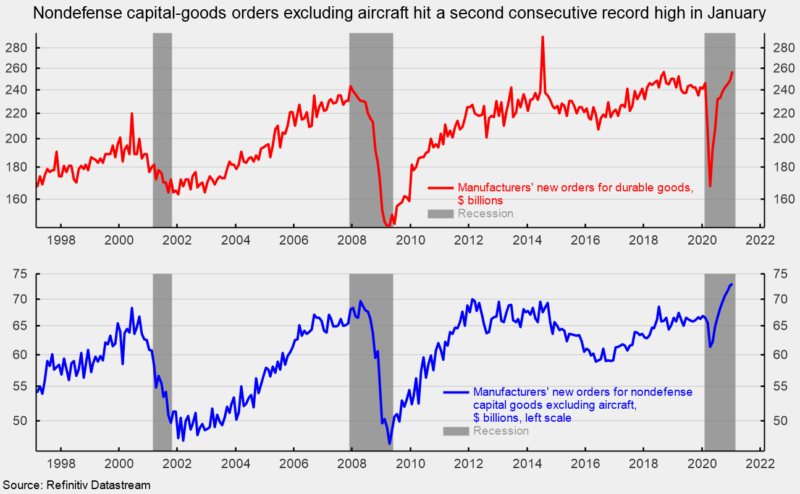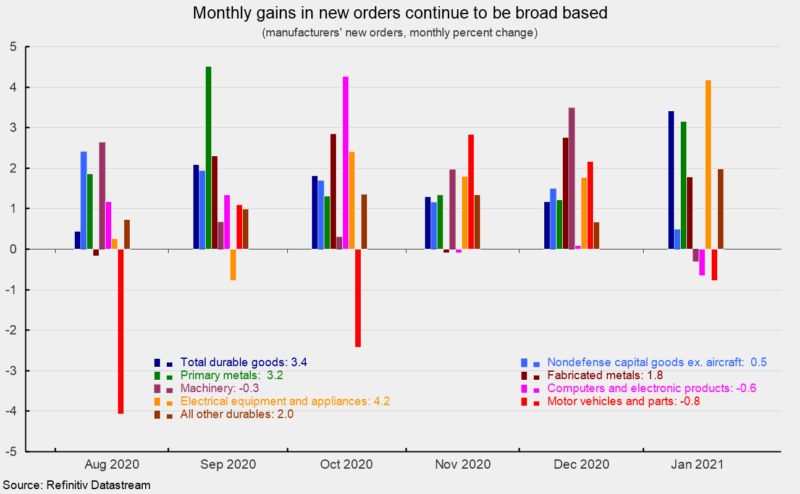Core Capital-Goods Orders Hit Another Record High in January
New orders for durable goods posted a ninth consecutive gain in January, rising 3.4 percent following a gain of 1.2 percent in December. Total durable-goods orders are up 4.6 percent from a year ago.
Much of the monthly gain came from the extremely volatile aircraft and parts orders category where nondefense aircraft and parts orders surged 389.9 percent while defense aircraft and parts jumped 63.5 percent. Durable-goods orders excluding aircraft and parts still rose an impressive 1.1 percent for the month. That is the fifth increase in a row and the eighth gain in the last nine months and puts the level of orders at $246.7 billion, a new record high.
New orders for nondefense capital goods excluding aircraft, a proxy for business equipment investment, rose 0.5 percent in January after gaining 1.5 percent in December, putting the level at $72.9 billion, the fifth consecutive record high. This important category had been in the $65 to $70 billion range for several periods over the past 15 years before dropping to $61.3 billion in April 2020. The $61.3 billion pace was the slowest since June 2017 (see first chart).
Most of the major categories of durable goods shown in the report had a gain in the latest month. Among the individual categories, primary metals rose 3.2 percent, fabricated metal products gained 1.8 percent, electrical equipment and appliances gained 4.2 percent, and the catch-all “other durables” category was up 2.0 percent. The three decliners were machinery orders, off 0.3 percent, computers and electronic products, down 0.7 percent, and motor vehicles and parts orders, down 0.8 percent (see second chart).
The report on durable-goods orders shows the resilience of the business sector in light of the Covid-19 pandemic and government lockdown policies. Extraordinary damage has been caused across the economy, but as government restrictions are eased, signs of recovery have emerged in some areas of the economy. The manufacturing sector (along with housing) is one of the more robust areas. Capital spending reflects the robust recoveries in some areas of the economy.







